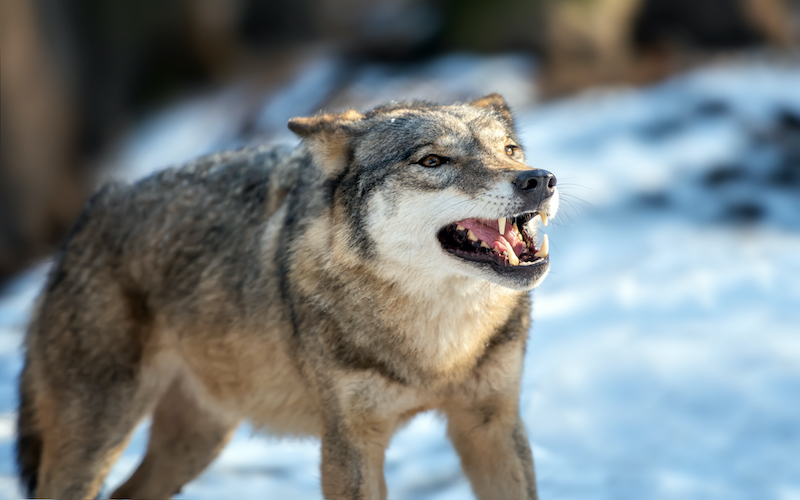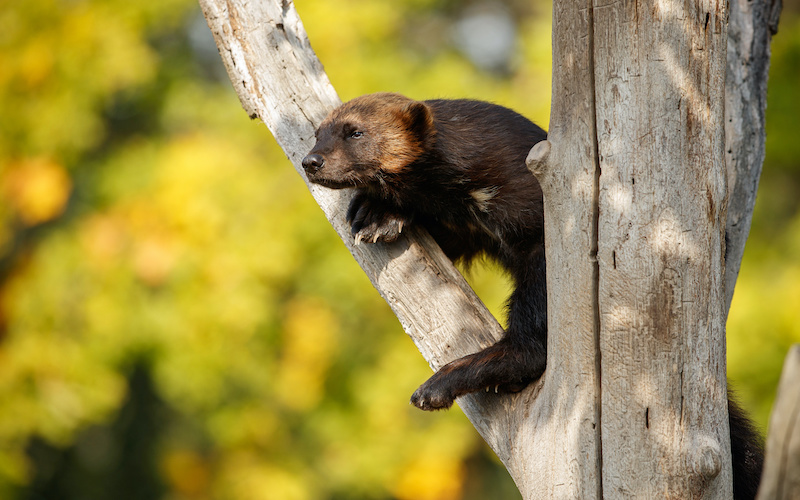When you think of wolves and wolverines, you might imagine two fierce, carnivorous mammals that roam the wild. Despite their similarities in ferocity and their somewhat misleading names, wolf and Wolverine belong to different families and exhibit distinct behaviors, physical characteristics, and habitats. In this comprehensive guide, we will explore these differences to provide a clearer understanding of these fascinating animals.
| Wolve | Wolverine |
 |  |
Overview of a Wolf and a Wolverine
Wolves
Wolves, scientifically known as Canis lupus, are members of the Canidae family, which also includes dogs, foxes, and other canids. Wolves are known for their social structure, living in packs that typically consist of 7 to 8 members but can range from 2 to 20 individuals. They are found across various regions, including North America, Europe, Asia, and parts of North Africa.
Wolverines
Wolverines, or Gulo gulo, belong to the Mustelidae family, which includes weasels, otters, and ferrets. Often referred to as gluttons or skunk bears, wolverines are solitary animals known for their incredible strength and ferocity relative to their size. They inhabit remote areas in the subarctic and alpine tundra of the Northern Hemisphere, including parts of Europe, Russia, Alaska, and Canada.
Physical Characteristics of a Wolf and a Wolverine
Size and Build
Wolves are significantly larger than wolverines. A wolf can measure 41 to 63 inches in length, stand 32 to 34 inches tall at the shoulder, and weigh between 40 to 175 pounds. They have long legs, a large head, an elongated muzzle, and a bushy tail. Their fur color can vary greatly, including shades of gray, white, black, brown, and reddish.
In contrast, wolverines are smaller and stockier. They measure 25 to 34 inches in length, stand 7 to 10 inches tall at the shoulder, and weigh between 22 to 55 pounds. Wolverines have broad, rounded heads, short legs, and large paws adapted for moving through snow. Their fur is thick, and oily, and ranges from dark brown to black, often with silver or white markings on the chest and face.
Morphological Features
Wolves have pricked ears, an elongated muzzle, and a lean, athletic build suited for endurance running. Wolverines, on the other hand, have short, rounded ears, small eyes, and a bear-like muscular body. Their large paws help them traverse snow-covered terrains efficiently.
Habitat and Distribution of a Wolf and a Wolverine
- Wolves: Wolves are versatile and inhabit a wide range of environments, including forests, grasslands, deserts, and tundras. They are highly adaptable and can thrive in various climates across the Northern Hemisphere, from the dense forests of North America to the icy tundras of Eurasia.
- Wolverines: Wolverines prefer colder climates and are commonly found in the boreal forests and subarctic tundra. They are primarily located in the northern parts of North America, Scandinavia, Russia, and Siberia. Wolverines are well-adapted to these harsh, snowy environments.
Behavior and Social Structure of a Wolf and a Wolverine
- Wolves: Wolves are highly social animals that live in structured packs. Each pack has a strict hierarchical order, usually led by the alpha male and female. This social structure helps them coordinate during hunts and care for their young. Wolves communicate through howls, barks, whines, and body language, which play crucial roles in maintaining pack cohesion and territory marking.
- Wolverines: Wolverines are solitary creatures, only coming together during the mating season. They are known for their territorial behavior, often defending their range fiercely from other wolverines. Wolverines use scent markings and vocalizations to establish and protect their territory.
Hunting and Diet
- Wolves: Wolves are pack hunters, employing complex strategies to hunt large prey such as moose, deer, elk, and bison. They are capable of running at high speeds for extended periods to wear down their prey before making the kill. Wolves will also eat smaller animals, birds, and occasionally fruits and berries.
- Wolverines: Wolverines are opportunistic feeders and scavengers, often feeding on carrion left by other predators like wolves. They hunt smaller prey such as rabbits, porcupines, beavers, and marmots. Despite their smaller size, wolverines are known to take down much larger animals when the opportunity arises, using their powerful jaws and teeth to crush bones and frozen meat.
Reproduction and Lifespan
- Wolves: Wolves form monogamous pairs that mate for life. The gestation period for a female wolf is about 62 to 75 days, resulting in a litter of 5 to 6 pups on average. The entire pack helps raise the pups until they are old enough to hunt with the group. Wolves can live up to 13 years in the wild.
- Wolverines: Male wolverines may form lifelong relationships with several females, visiting them during the mating season. Female wolverines have a gestation period of 30 to 50 days, giving birth to 2 to 3 kits. The father shows some level of parental care until the kits are about 10 weeks old. Wolverines can live up to 13 years in the wild.
Interaction and Conflict
Wolves and wolverines occasionally encounter each other in the wild. Wolves, being larger and more social, often dominate these encounters. A pack of wolves can easily overpower a solitary wolverine, making wolves one of the primary predators of wolverines. However, wolverines are formidable fighters and can sometimes fend off wolves, especially smaller or lone wolves.
Summary of Key Differences Between a Wolf and a Wolverine
- Family and Classification: Wolves belong to the Canidae family, while wolverines are part of the Mustelidae family.
- Size: Wolves are larger, weighing up to 175 pounds, whereas wolverines weigh between 22 to 55 pounds.
- Social Structure: Wolves live in packs with a strict hierarchy; wolverines are solitary and territorial.
- Habitat: Wolves inhabit diverse environments, including forests and tundras, while wolverines prefer colder, subarctic regions.
- Hunting Behavior: Wolves hunt in packs, targeting large prey; wolverines scavenge and hunt smaller animals.
- Physical Characteristics: Wolves have long legs, pricked ears, and a lean build; wolverines have a stocky build, short legs, and rounded ears.
- Reproduction: Wolves have larger litters (5-6 pups) and longer gestation (62-75 days) compared to wolverines (2-3 kits, 30-50 days).
Final Verdict
Understanding the differences between a Wolf and a Wolverine reveals the unique adaptations and behaviors that allow each species to thrive in their respective environments. Wolves, with their social packs and coordinated hunting strategies, exemplify the strength of communal living. Wolverines, solitary yet incredibly powerful, demonstrate the fierce independence and adaptability needed to survive in some of the harshest climates on Earth.
Whether you are a wildlife enthusiast, a student, or just curious about these remarkable animals, appreciating the distinct characteristics of wolves and wolverines enhances our understanding of the natural world and the diverse creatures that inhabit it.





